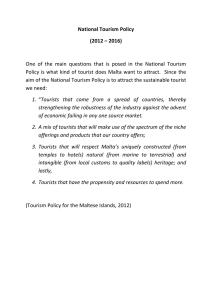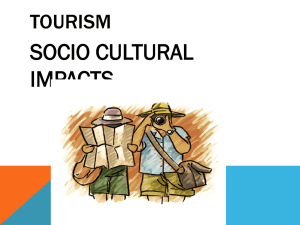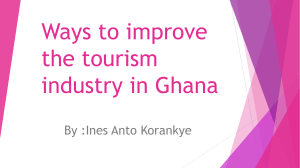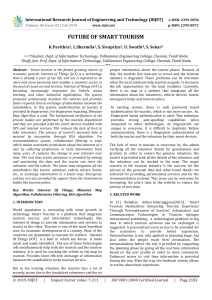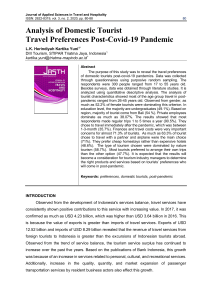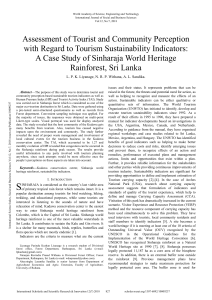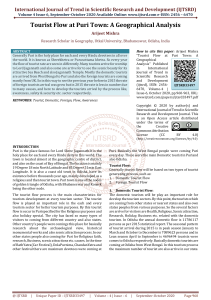Chapter 6 Writing Exercise sustainable development secure economic environment
advertisement
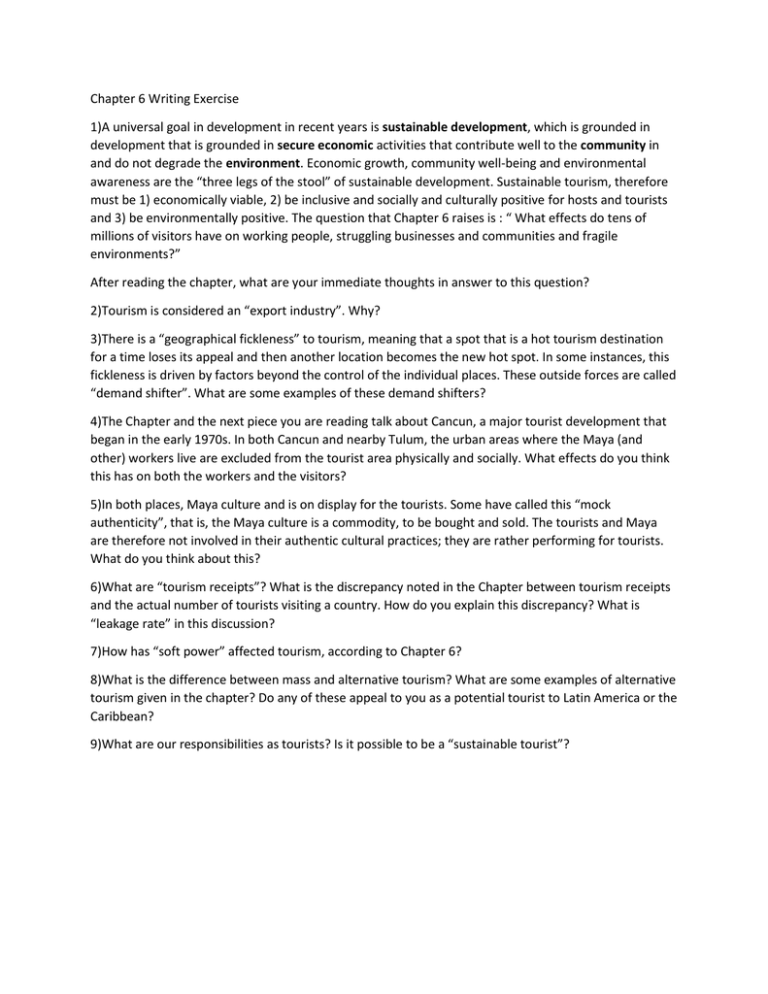
Chapter 6 Writing Exercise 1)A universal goal in development in recent years is sustainable development, which is grounded in development that is grounded in secure economic activities that contribute well to the community in and do not degrade the environment. Economic growth, community well-being and environmental awareness are the “three legs of the stool” of sustainable development. Sustainable tourism, therefore must be 1) economically viable, 2) be inclusive and socially and culturally positive for hosts and tourists and 3) be environmentally positive. The question that Chapter 6 raises is : “ What effects do tens of millions of visitors have on working people, struggling businesses and communities and fragile environments?” After reading the chapter, what are your immediate thoughts in answer to this question? 2)Tourism is considered an “export industry”. Why? 3)There is a “geographical fickleness” to tourism, meaning that a spot that is a hot tourism destination for a time loses its appeal and then another location becomes the new hot spot. In some instances, this fickleness is driven by factors beyond the control of the individual places. These outside forces are called “demand shifter”. What are some examples of these demand shifters? 4)The Chapter and the next piece you are reading talk about Cancun, a major tourist development that began in the early 1970s. In both Cancun and nearby Tulum, the urban areas where the Maya (and other) workers live are excluded from the tourist area physically and socially. What effects do you think this has on both the workers and the visitors? 5)In both places, Maya culture and is on display for the tourists. Some have called this “mock authenticity”, that is, the Maya culture is a commodity, to be bought and sold. The tourists and Maya are therefore not involved in their authentic cultural practices; they are rather performing for tourists. What do you think about this? 6)What are “tourism receipts”? What is the discrepancy noted in the Chapter between tourism receipts and the actual number of tourists visiting a country. How do you explain this discrepancy? What is “leakage rate” in this discussion? 7)How has “soft power” affected tourism, according to Chapter 6? 8)What is the difference between mass and alternative tourism? What are some examples of alternative tourism given in the chapter? Do any of these appeal to you as a potential tourist to Latin America or the Caribbean? 9)What are our responsibilities as tourists? Is it possible to be a “sustainable tourist”?
